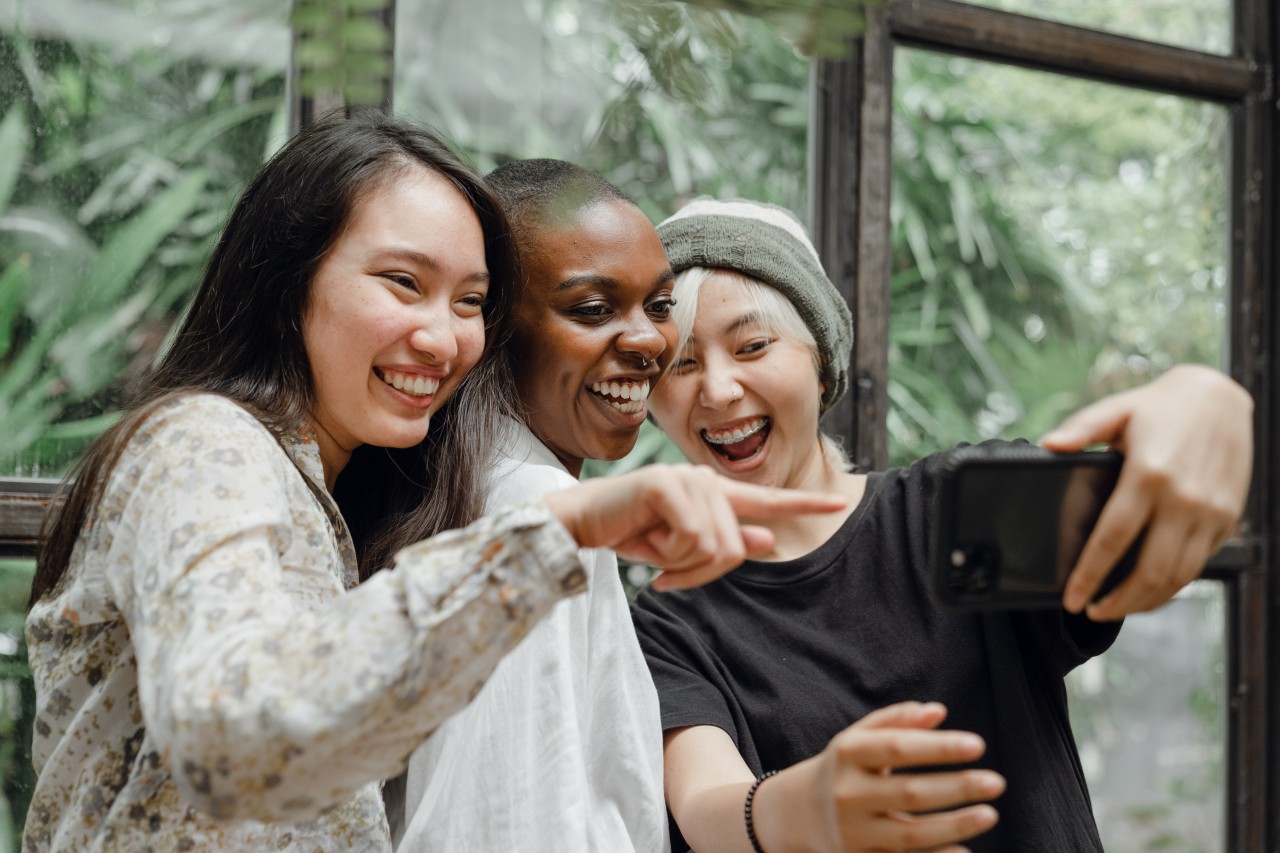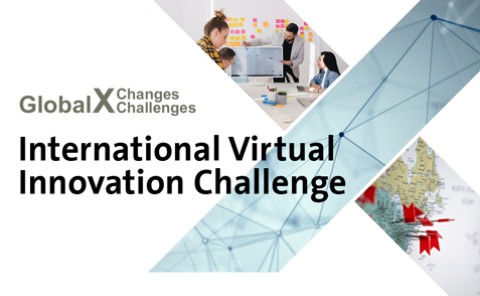Empowering Youngsters
GXC challenge with the Munich City District Youth Association

Overview
The challenge for this project was proposed by the Munich City District Youth Association, in German Kreisjugendring München-Stadt (KJR), and has previously been discussed on a quadruple-helix experts workshop, organized by HM’s innovation network M:UniverCity. The KJR is a working group of more than seventy youth associations and communities in Munich. It organizes children, adolescents and young adults between the ages of six and twenty-seven that belong to a wide variety of nationalities, denominations and social groups. With this challenge, the KJR aimed to receive ideas on how to promote digital youth participation in a proactive and sustainable way.
Problem
Organizations such as the the KJR are currently lacking engaging digital means of communication for its youth. Youngsters in many youth associations normally participate in processes that include discussions, votings, and information exchange in-person at local youth centres under the supervision of group leaders. The onset of COVID-19, however, limited these activities and thus stifled youth engagement dramatically. At the KJR, existing social media tools were used as temporary solution but proved inadequate in their privacy policies and data-protection. In addition, they lacked basic participatory functions. Since the KJR’s customer base includes children and young adults of various racial, ethnic or national backgrounds, it is very important to be sensitive about these aspects and to create an environment, which promotes inclusion and diversity. Youngsters with disabilities should not be at any sort of disadvantage either. The KJR reality is not unique, many organizations and clubs working with youngsters are currently facing similar challenges.
In this sense, the challenge for the student teams was openly stated as: The future of youth participation: How to empower the youngsters?
Approach
For nine weeks, video lectures and weekly live sessions for content input as well as individual team coaching sessions with experts accompanied the students. The teams followed an innovation process applied in the action-learning course “Real Projects” from HM’s entrepreneurship centre SCE. This process starts by understanding the problem through general research. In the students’ case, this research was about youth involvement, community engagement, youth censorship and data protection. During a first meeting with the KJR, the students were then able to discuss the challenge in person and to ask questions. In addition, they interviewed stakeholders. This helped them to define the problem better and to collect the first rough ideas.
In the third week, with the support of Amazon Web Services and HM’s Digital Transformation Lab, a two-part intensive workshop enabled the students to concretize the first approaches of their problem solutions. A brainstorming exercise called the "Crazy Eight Ideation" method helped them to come up with different kinds of ideas, which they then tried to structure. To apply a customer-centric focus, the teams learned how to apply the innovation method "Working Backwards" in the workshop. This way of innovating is used especially by Amazon and considers the needs and wishes of the potential end-users as well as in this case those of the KJR. Using these techniques, the teams were able to decide on one final solution idea each. During the following six weeks, these ideas were then elaborated with the help of various artefacts, including storyboards, fictional press releases, empathy maps, FAQs (Frequently Asked Questions), business model canvases and, ultimately, digital prototypes. To get an idea of how to prototype using digital technologies, the students were provided with detailed information about three different tools: Figma, Bubble and Glide.
In a second online meeting with the challenge giver, the ideas and drafts of the prototypes were then shown to the KJR for the first time. Valuable feedback helped the teams to further develop the prototypes and to finalize them for their final presentation.
Prototypes
The first team Intercos used Figma to develop an app that allows youngsters across the city of Munich to chat, vote and exchange information in a digital format. The digital tool is envisioned for youth organizations such as the KJR as primary medium of digital engagement to allow youngsters and group leaders to host and participate in decision processes. The app serves as a tool with the potential to lead the way for both youth-led outreach as well as promotion of general youth engagement within an organization and broadly in society. With its help, children and young adults get a chance to find their place in their community and to participate in local events and activities. This way, they can be actively engaged in the happenings of their communities and of the world.
The second team got inspired by the usability of the dating app ‘Tinder’: Their mobile app EVENTually (prototyped with Figma) allows young people to find their perfect event or activity match by swiping through offers from different organizations, fitting them to their needs and wants. Focusing on the event/activity aspect, the app allows both online and offline events to happen, hosts discussion forums and enables youngsters to find people that share the same interests. The events start with small local events but could even be virtual with hundreds of people. From parties to football matches or Fridays for Future marches – by downloading EVENTually, youngsters can easily find events that fit their preferences. In addition, they can get actively involved in the process of planning and executing them. This gives them responsibilities and teaches them how to be independent. It also allows same-minded people to connect on a virtual basis before an event takes place.
The mobile app OurVoice was developed by team three with the help of Figma. It is a digital hub that encourages young people aged 14-25 to get involved in local civic issues on a global scale. Considering the social disparities and injustices that were revealed because of COVID-19, the youth is revolutionizing digital activism and awakes its drive to make a difference in communities and the future. Through this app, young people around the world have the chance to connect with each other beyond borders and differences, engaging in online discussion forums, polls, resources, virtual workshops, and events related to social causes and various interests. OurVoice empowers the common vision of the youth to make a social change that positively shapes their future by amplifying its voices.
Next Steps
The final presentation to the KJR and M:UniverCity took place on December 8th, 2020. Following the presentation, the student teams shared their presentations as well as a link to their prototypes with the KJR, who is planning on acquiring funds and support to implement a solution inspired by the prototypes. Furthermore, the teams were all invited to take part in the SCE Pitch Festival and compete with other student teams for a prize of €1.000.

About GXC
This project was one of the three challenges of the GXC International Virtual Innovation Challenge. It is a special edition of the Real Projects course format, which was offered for the first time in the winter semester 2020/21 as part of the "GlobalXChanges/Challenges (GXC)" project. In this virtual online course, public governmental and non-governmental organizations proposed innovation challenges that could be solved by using digital technologies. Next, students from Munich University of Applied Sciences (MUAS) and its four strategic partner institutions dived into an international virtual action-learning course. The students were divided into international interdisciplinary teams and followed an innovation process to tackle the proposed challenges and prototype solutions. The course included video lectures and dynamic weekly live sessions with a professor for content input and additional tutoring and team coaching sessions with industry experts to get advice on prototyping. Mentor students helped with the challenges of remote international teamwork.
The GlobalXChanges/Challenges project is funded by the German Academic Exchange Service (DAAD) from funds of the Federal Ministry of Education and Research (BMBF). For more information on the GXC measures and the International Virtual Innovation Challenge, visit hm.edu/gxc.